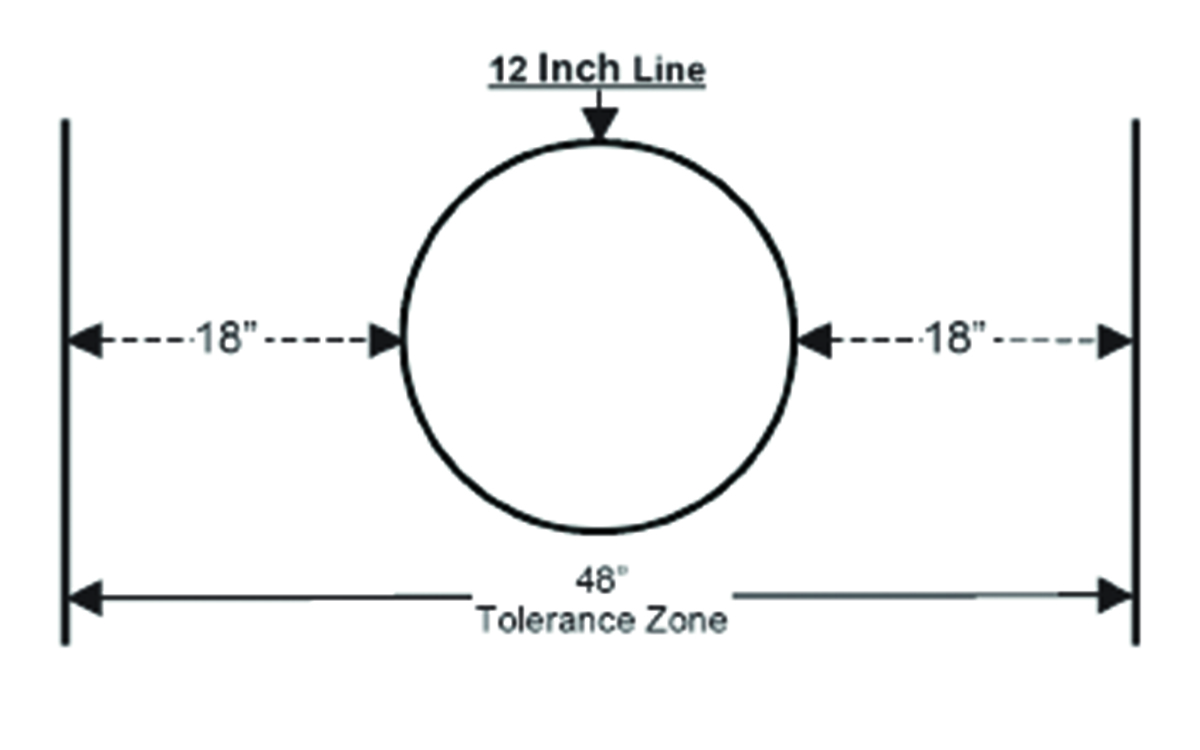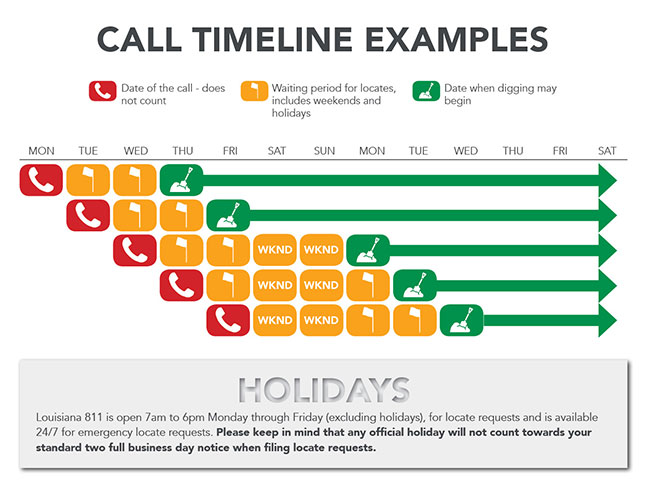Homeowner Responsibilities
DON’T ASSUME THAT YOU CAN DIG SAFELY ANYWHERE YOU DON’T SEE MARKS.
When you call or click to file a locate request, we use a sophisticated computerized mapping system to notify members whose facilities are likely to be affected by your excavation or demolition. Our members respond by marking their cables, pipelines, and similar systems so that you can avoid them. It is up to you to avoid them when you dig, and any necessary repairs or maintenance are also your responsibility.
If your gas meter, electric meter or water meter are not installed directly on your building, you must take special care when excavating on your property. Many homes and offices have utility meters installed some distance away. If this is the case on your property, the lines from the meters to your structures are your responsibility. Even when utilities mark their lines near your work site, digging in unmarked areas can still be hazardous or cause service interruptions.
What is NOT Marked
The pipelines and utilities who belong to Louisiana 811 take your safety seriously, and they do their best to mark their lines quickly and accurately whenever you call us. But they can’t mark what they don’t know about.
When your home or office was built, the builder probably hired professionals to install some of the service lines. The utilities have no record of where these service lines are located because they didn’t install them. That’s why buried lines usually are marked only up to your meter or to the beginning of your service line. Or, in some jurisdictions, only to the nearest electrical transformer.
Also, some operators of underground facilities are not Louisiana 811 members. Examples include municipal water and sewer services in some smaller towns. If they don’t belong, we don’t have the information we need to notify them about planned excavations, and their lines won’t be marked unless you contact the operators directly.
So, always dig with care. And when in doubt, call a plumber or an electrician to help you locate buried service lines on your property before you dig. It can prevent costly damages and it might save your life.
Homeowners’ Frequently Asked Questions
Listed below are some of the most frequently asked questions about safe digging. If you have a question or concern that’s not addressed below, call 811 or 1-800-272-3020
Why do I need to Call 811?
▶It is the law in the state of Louisiana to have utility lines marked before conducting excavation or digging. Louisiana 811 receives notifications, or locate requests, from individuals planning to dig and transmits them to our member utility companies so they can mark their lines and digging can commence, safely. Calling 811 is one of the best ways to protect the public from harm, prevent utility services interruptions and avoid costly damage.
How can I contact Louisiana 811?
▶Homeowners may contact us from 7:00 a.m. to 6:00 p.m., Monday through Friday (excluding holidays), by calling 811 or 1-800-272-3020 or by utilizing this website.
How far in advance should I call/contact Louisiana 811?
▶What type of digging activities should be called in?
▶The law designates that anyone planning on digging, excavating, tunneling, grading, boring, blasting, demolition or similar work should contact 811. However, for safety’s sake, we recommend you call for any project in which you plan to break ground. Underground utilities can be damaged while individuals are installing mailboxes, building fences or decks, or even planting trees. Remember, even if your project is small, it’s always best to call 811!
The Process
Plan your work.
Markings for underground utilities are only considered valid up to 20 calendar days (30 for agricultural and forestry work) from the “mark-by” time as provided by the one call operator. The “mark-by” time does not include holidays or weekends. For larger projects, call in only the work that can be accomplished within a 20-day period. Call 811 or click at least 2 business days before you want to start digging.
Read through the For Best Results section and be prepared with those answers. If calling in your request, record the locate request number provided by the one-call operator. It is your proof of the call and may be requested by an enforcement agency.
Wait for the site to be marked.
Wherever possible, use white paint, stakes or flags to identify your proposed excavation area. This helps the marking crews identify your work site and place their markings accordingly. Crews mark the site before the work begins, using color-coded markers to indicate the types and locations of each pipeline or cable.
Tolerance Zones
Excavators should observe a “Tolerance Zone” when digging close to a service line. The width of the Tolerance Zone is specified by law. The width of the facility (service line or pipeline, etc.) as marked plus at least 18 inches, or 450mm, measured horizontally from each side of the facility. See illustration.
Any excavation within a Tolerance Zone should be performed with non-powered hand tools or a non-invasive method until the marked facility is exposed.

Paint or flag color indicator
Property owners and excavators should use white markings to define the entire area where excavation will occur. Include a wide safety buffer when marking the area.
|
|
Property Owners/Excavators mark area of Proposed Excavation |
One Call member utilities will use the color codes listed below when marking underground utilities where excavation will take place.
|
|
Electric Power Lines, Lighting Cables |
|
|
Temporary Survey Markings |
|
|
Gas, Oil, Steam, Propane, Petroleum |
|
|
Communication, CATV, Fiber |
|
|
Potable Water |
|
|
Reclaimed Water, Irrigation |
|
|
Sewer and Drain Lines |
